Abstract
Using different types of bacteria and a canine model simulating human septic shock, we investigated the role of endotoxin in cardiovascular dysfunction and mortality. Either Escherichia coli (a microorganism with endotoxin) or Staphylococcus aureus (a microorganism without endotoxin) were placed in an intraperitoneal clot in doses of viable or formalin-killed bacteria. Cardiovascular function of conscious animals was studied using simultaneous radionuclide heart scans and thermodilution cardiac outputs. Serial plasma endotoxin levels were measured. S. aureus produced a pattern of reversible cardiovascular dysfunction over 7-10 d that was concordant (P less than 0.01) with that of E. coli. Although this cardiovascular pattern was not altered by formalin killing (S. aureus and E. coli), formalin-killed organisms produced a lower mortality and less myocardial depression (P less than 0.01). S. aureus, compared to E. coli, produced higher postmortem concentrations of microorganisms and higher mortality (P less than 0.025). E. coli produced significant endotoxemia (P less than 0.01), though viable organisms (versus nonviable) resulted in higher endotoxin blood concentrations (P less than 0.05). Significant endotoxemia did not occur with S. aureus. Thus, in the absence of endotoxemia, S. aureus induced the same cardiovascular abnormalities of septic shock as E. coli. These findings indicate that structurally and functionally distinct microorganisms, with or without endotoxin, can activate a common pathway resulting in similar cardiovascular injury and mortality.
Full text
PDF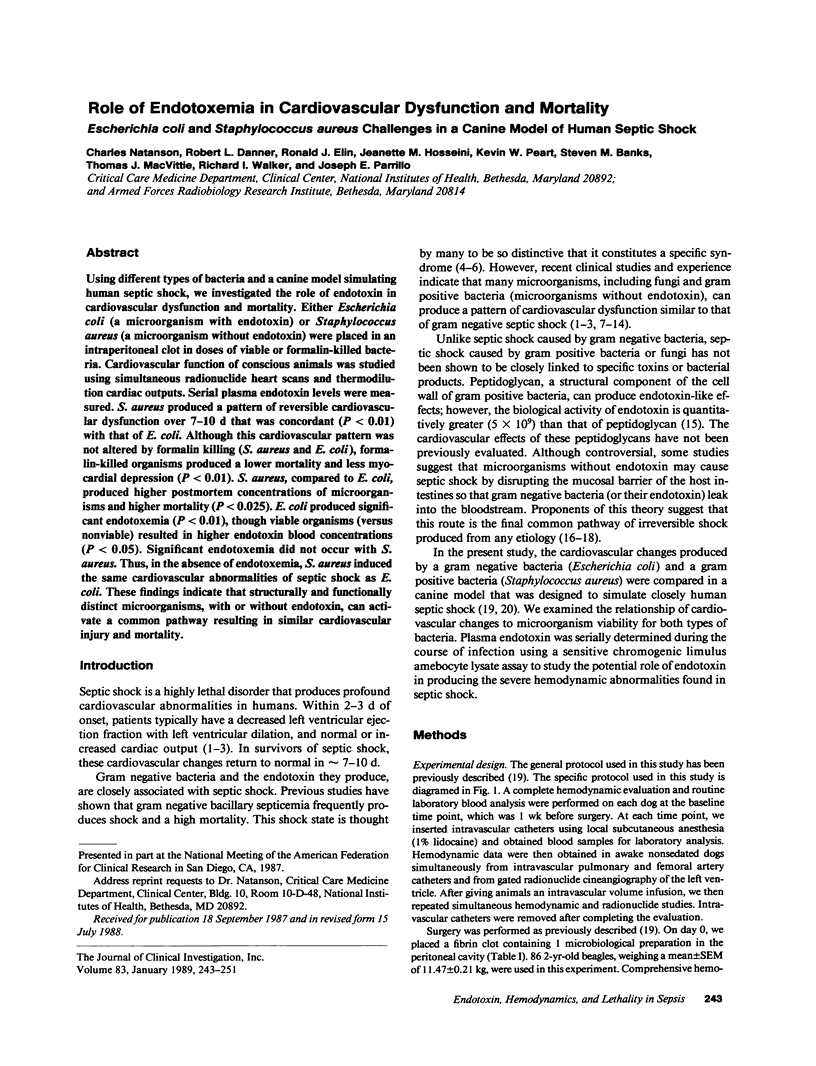
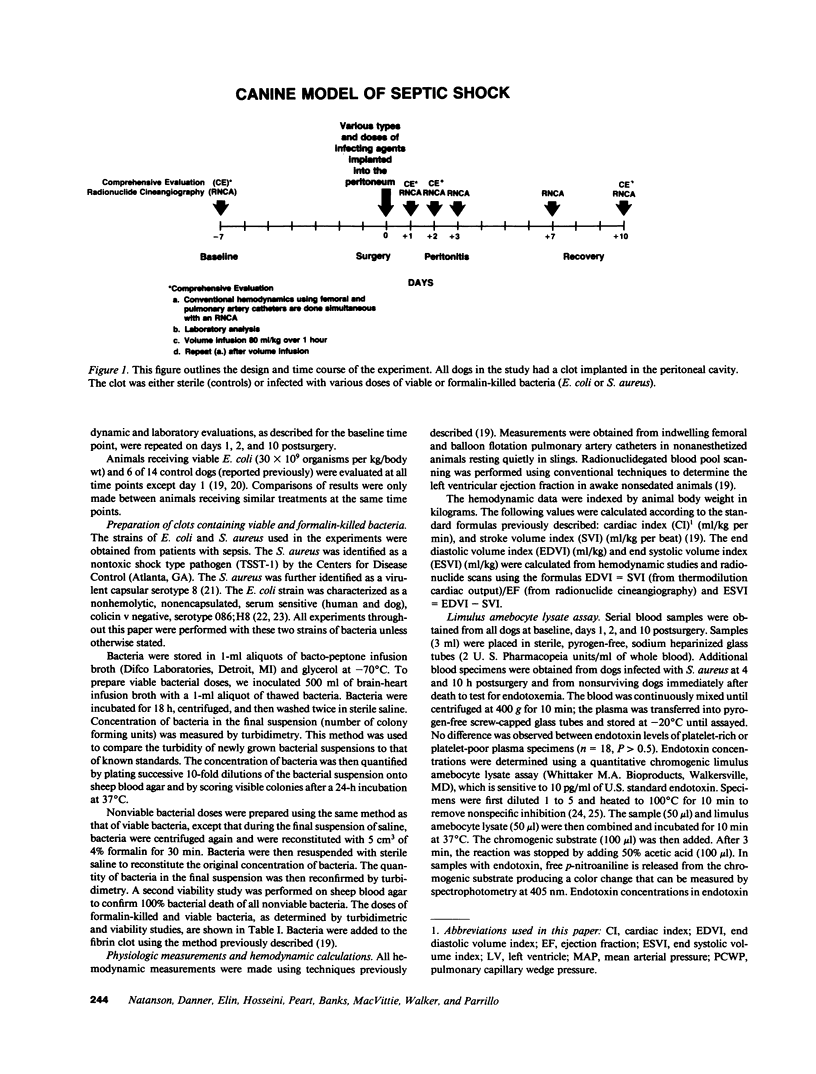
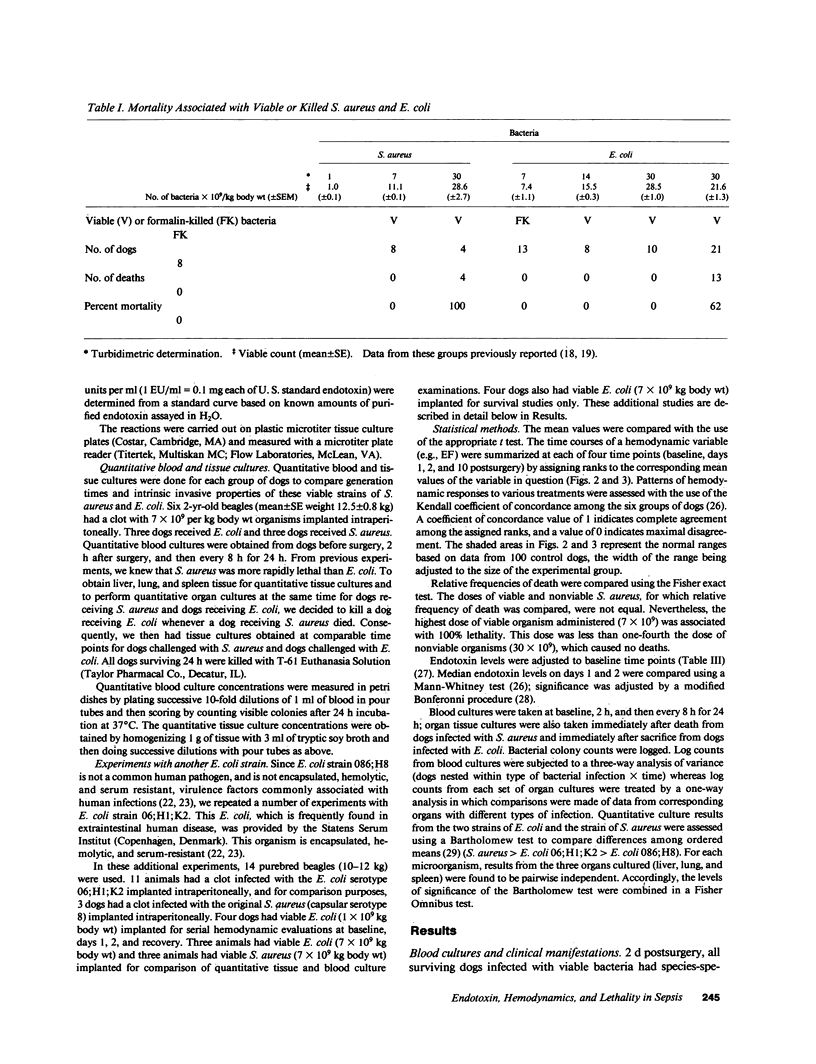
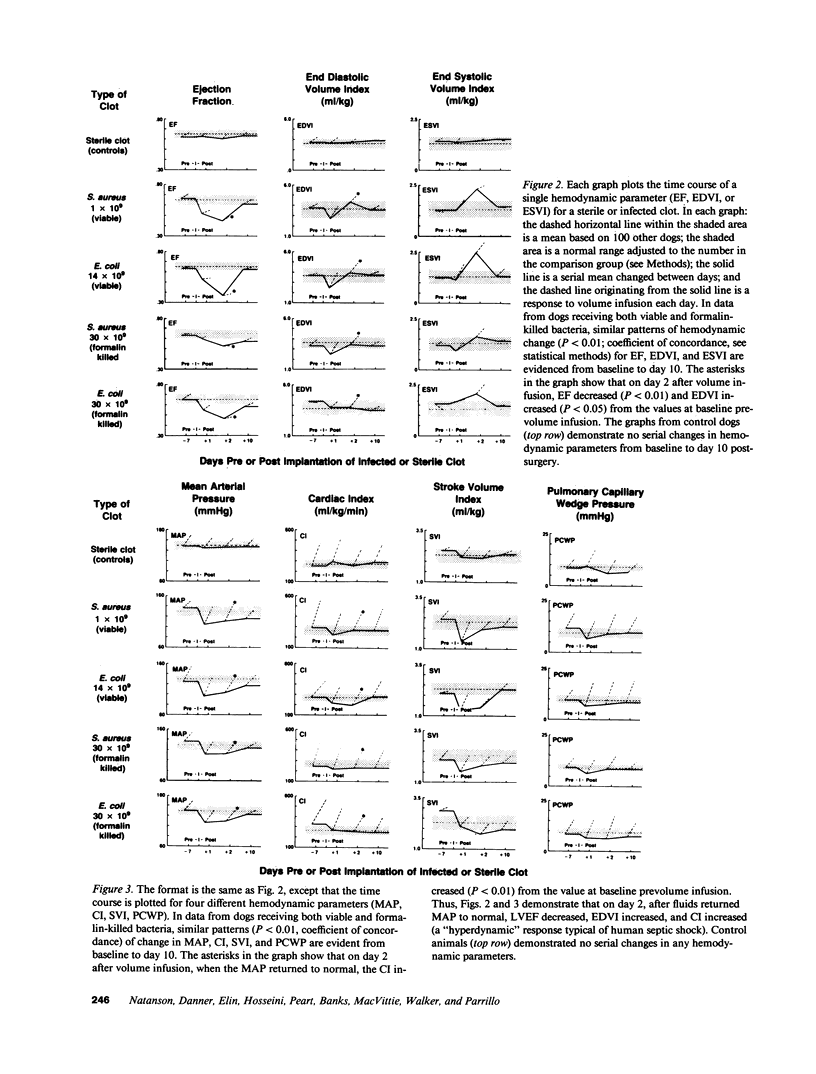

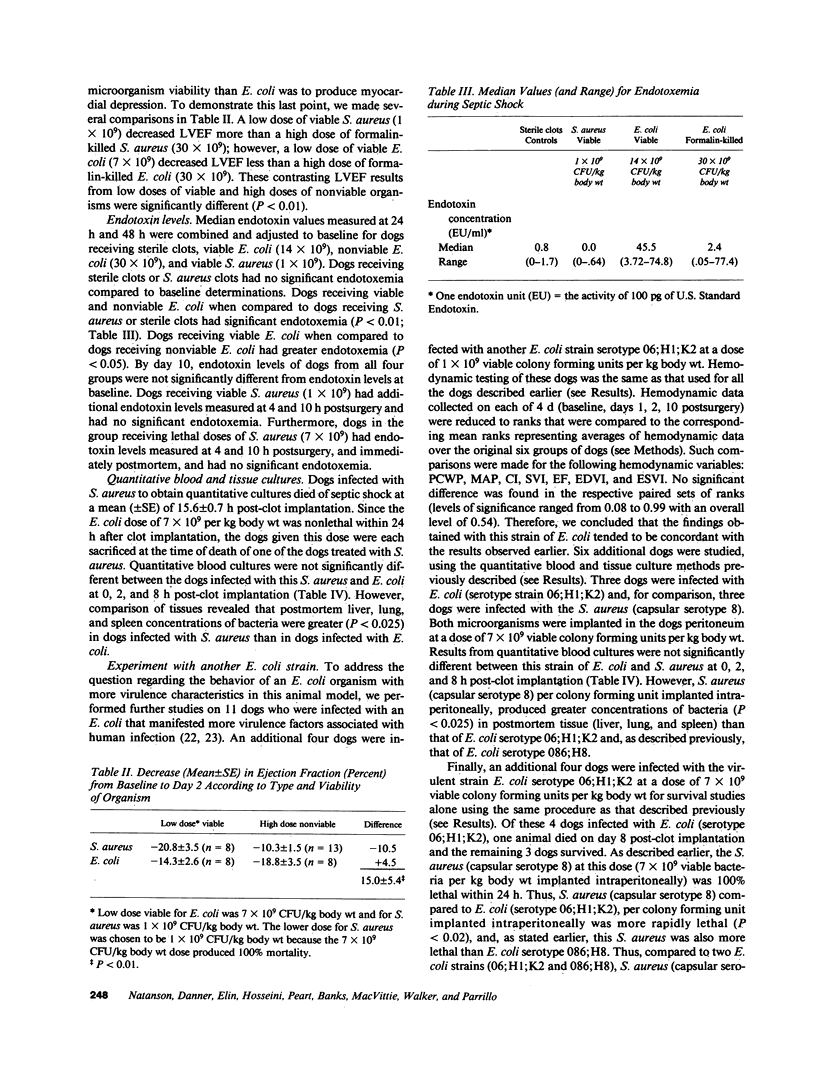
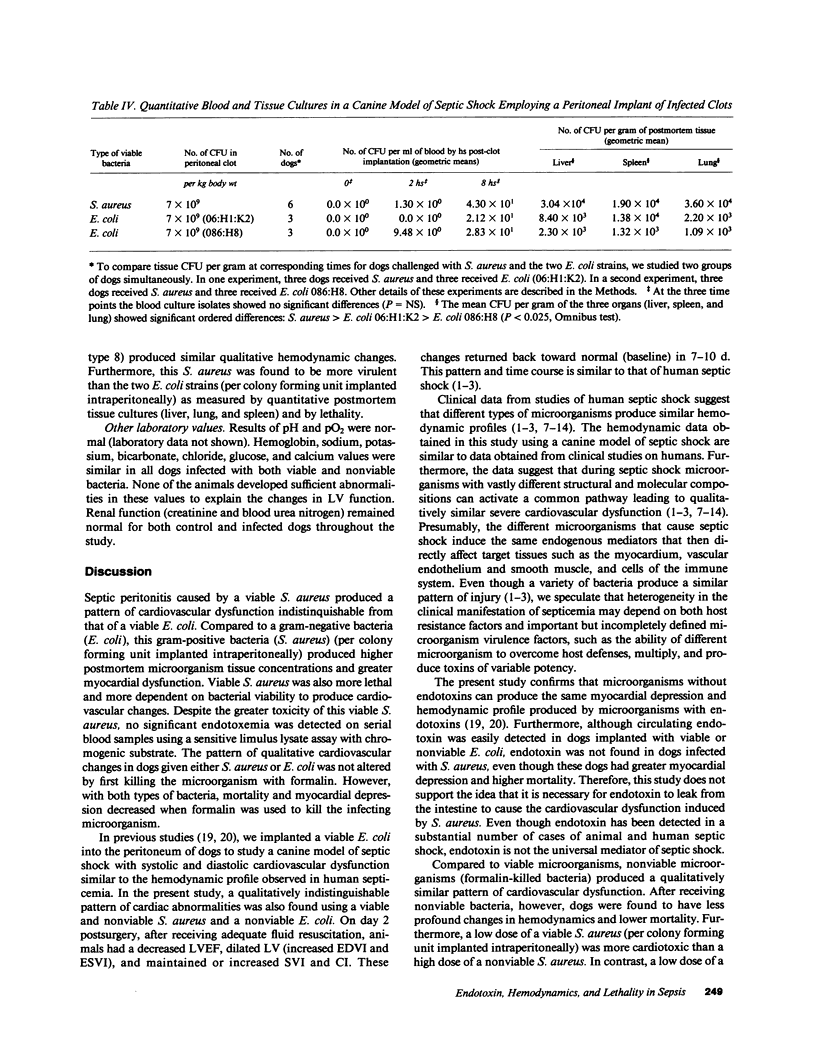
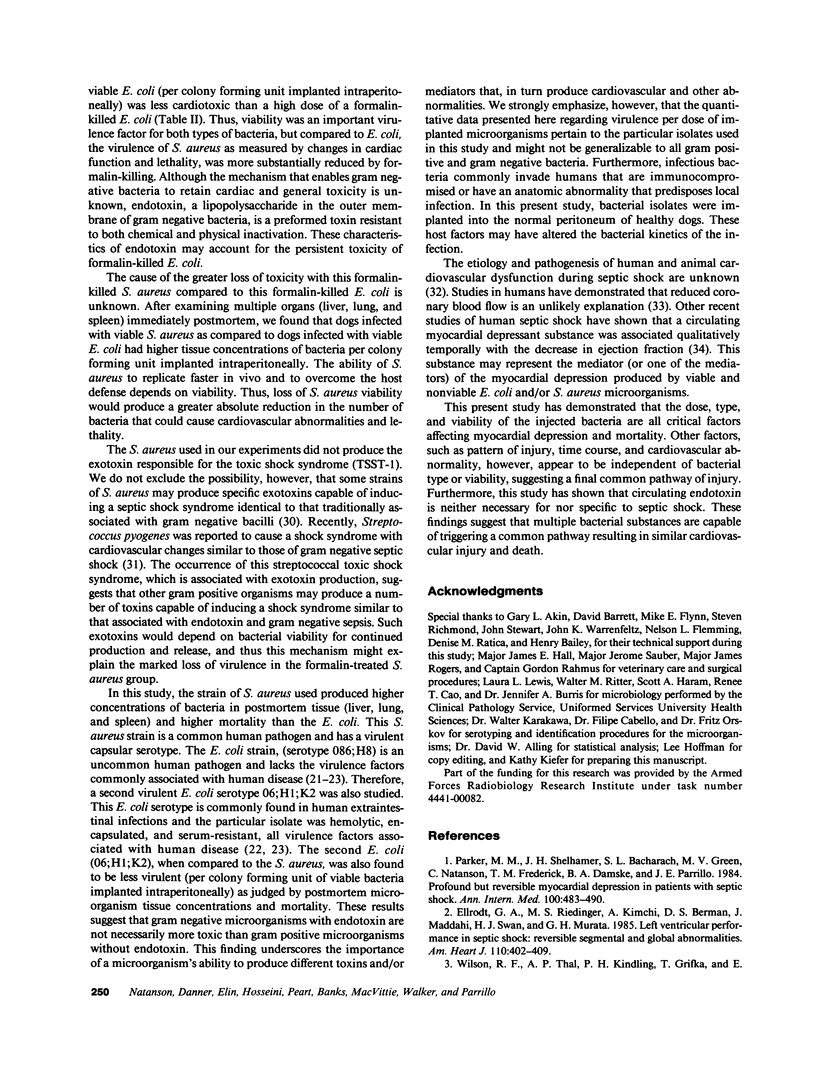
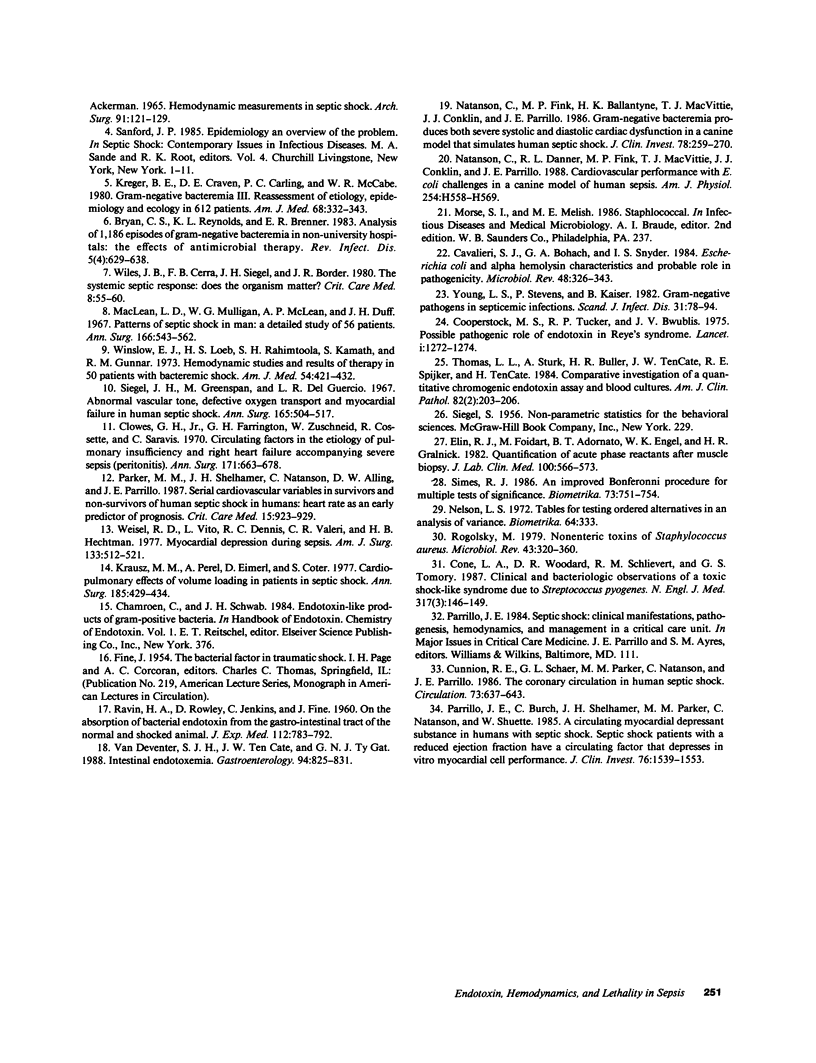
Selected References
These references are in PubMed. This may not be the complete list of references from this article.
- Bryan C. S., Reynolds K. L., Brenner E. R. Analysis of 1,186 episodes of gram-negative bacteremia in non-university hospitals: the effects of antimicrobial therapy. Rev Infect Dis. 1983 Jul-Aug;5(4):629–638. doi: 10.1093/clinids/5.4.629. [DOI] [PubMed] [Google Scholar]
- Cavalieri S. J., Bohach G. A., Snyder I. S. Escherichia coli alpha-hemolysin: characteristics and probable role in pathogenicity. Microbiol Rev. 1984 Dec;48(4):326–343. doi: 10.1128/mr.48.4.326-343.1984. [DOI] [PMC free article] [PubMed] [Google Scholar]
- Clowes G. H., Jr, Farrington G. H., Zuschneid W., Cossette G. R., Saravis C. Circulating factors in the etiology of pulmonary insufficiency and right heart failure accompanying severe sepsis (peritonitis). Ann Surg. 1970 May;171(5):663–678. doi: 10.1097/00000658-197005000-00005. [DOI] [PMC free article] [PubMed] [Google Scholar]
- Cone L. A., Woodard D. R., Schlievert P. M., Tomory G. S. Clinical and bacteriologic observations of a toxic shock-like syndrome due to Streptococcus pyogenes. N Engl J Med. 1987 Jul 16;317(3):146–149. doi: 10.1056/NEJM198707163170305. [DOI] [PubMed] [Google Scholar]
- Cooperstock M. S., Tucker R. P., Baublis J. V. Possible pathogenic role of endotoxin in Reye's syndrome. Lancet. 1975 Jun 7;1(7919):1272–1274. doi: 10.1016/s0140-6736(75)92553-2. [DOI] [PubMed] [Google Scholar]
- Cunnion R. E., Schaer G. L., Parker M. M., Natanson C., Parrillo J. E. The coronary circulation in human septic shock. Circulation. 1986 Apr;73(4):637–644. doi: 10.1161/01.cir.73.4.637. [DOI] [PubMed] [Google Scholar]
- Elin R. J., Foidart M., Adornato B. T., Engel W. K., Gralnick H. R. Quantification of acute phase reactants after muscle biopsy. J Lab Clin Med. 1982 Oct;100(4):566–573. [PubMed] [Google Scholar]
- Ellrodt A. G., Riedinger M. S., Kimchi A., Berman D. S., Maddahi J., Swan H. J., Murata G. H. Left ventricular performance in septic shock: reversible segmental and global abnormalities. Am Heart J. 1985 Aug;110(2):402–409. doi: 10.1016/0002-8703(85)90163-2. [DOI] [PubMed] [Google Scholar]
- Krausz M. M., Perel A., Eimerl D., Cotev S. Cardiopulmonary effects of volume loading in patients in septic shock. Ann Surg. 1977 Apr;185(4):429–434. doi: 10.1097/00000658-197704000-00010. [DOI] [PMC free article] [PubMed] [Google Scholar]
- Kreger B. E., Craven D. E., Carling P. C., McCabe W. R. Gram-negative bacteremia. III. Reassessment of etiology, epidemiology and ecology in 612 patients. Am J Med. 1980 Mar;68(3):332–343. doi: 10.1016/0002-9343(80)90101-1. [DOI] [PubMed] [Google Scholar]
- MacLean L. D., Mulligan W. G., McLean A. P., Duff J. H. Patterns of septic shock in man--a detailed study of 56 patients. Ann Surg. 1967 Oct;166(4):543–562. doi: 10.1097/00000658-196710000-00004. [DOI] [PMC free article] [PubMed] [Google Scholar]
- Natanson C., Danner R. L., Fink M. P., MacVittie T. J., Walker R. I., Conklin J. J., Parrillo J. E. Cardiovascular performance with E. coli challenges in a canine model of human sepsis. Am J Physiol. 1988 Mar;254(3 Pt 2):H558–H569. doi: 10.1152/ajpheart.1988.254.3.H558. [DOI] [PubMed] [Google Scholar]
- Natanson C., Fink M. P., Ballantyne H. K., MacVittie T. J., Conklin J. J., Parrillo J. E. Gram-negative bacteremia produces both severe systolic and diastolic cardiac dysfunction in a canine model that simulates human septic shock. J Clin Invest. 1986 Jul;78(1):259–270. doi: 10.1172/JCI112559. [DOI] [PMC free article] [PubMed] [Google Scholar]
- Parker M. M., Shelhamer J. H., Bacharach S. L., Green M. V., Natanson C., Frederick T. M., Damske B. A., Parrillo J. E. Profound but reversible myocardial depression in patients with septic shock. Ann Intern Med. 1984 Apr;100(4):483–490. doi: 10.7326/0003-4819-100-4-483. [DOI] [PubMed] [Google Scholar]
- Parker M. M., Shelhamer J. H., Natanson C., Alling D. W., Parrillo J. E. Serial cardiovascular variables in survivors and nonsurvivors of human septic shock: heart rate as an early predictor of prognosis. Crit Care Med. 1987 Oct;15(10):923–929. doi: 10.1097/00003246-198710000-00006. [DOI] [PubMed] [Google Scholar]
- Parrillo J. E., Burch C., Shelhamer J. H., Parker M. M., Natanson C., Schuette W. A circulating myocardial depressant substance in humans with septic shock. Septic shock patients with a reduced ejection fraction have a circulating factor that depresses in vitro myocardial cell performance. J Clin Invest. 1985 Oct;76(4):1539–1553. doi: 10.1172/JCI112135. [DOI] [PMC free article] [PubMed] [Google Scholar]
- RAVIN H. A., ROWLEY D., JENKINS C., FINE J. On the absorption of bacterial endotoxin from the gastro-intestinal tract of the normal and shocked animal. J Exp Med. 1960 Nov 1;112:783–792. doi: 10.1084/jem.112.5.783. [DOI] [PMC free article] [PubMed] [Google Scholar]
- Rogolsky M. Nonenteric toxins of Staphylococcus aureus. Microbiol Rev. 1979 Sep;43(3):320–360. doi: 10.1128/mr.43.3.320-360.1979. [DOI] [PMC free article] [PubMed] [Google Scholar]
- Siegel J. H., Greenspan M., Del Guercio L. R. Abnormal vascular tone, defective oxygen transport and myocardial failure in human septic shock. Ann Surg. 1967 Apr;165(4):504–517. doi: 10.1097/00000658-196704000-00002. [DOI] [PMC free article] [PubMed] [Google Scholar]
- Thomas L. L., Sturk A., Büller H. R., ten Cate J. W., Spijker R. E., ten Cate H. Comparative investigation of a quantitative chromogenic endotoxin assay and blood cultures. Am J Clin Pathol. 1984 Aug;82(2):203–206. doi: 10.1093/ajcp/82.2.203. [DOI] [PubMed] [Google Scholar]
- Weisel R. D., Vito L., Dennis R. C., Valeri C. R., Hechtman H. B. Myocardial depression during sepsis. Am J Surg. 1977 Apr;133(4):512–521. doi: 10.1016/0002-9610(77)90141-6. [DOI] [PubMed] [Google Scholar]
- Wiles J. B., Cerra F. B., Siegel J. H., Border J. R. The systemic septic response: does the organism matter? Crit Care Med. 1980 Feb;8(2):55–60. doi: 10.1097/00003246-198002000-00001. [DOI] [PubMed] [Google Scholar]
- Winslow E. J., Loeb H. S., Rahimtoola S. H., Kamath S., Gunnar R. M. Hemodynamic studies and results of therapy in 50 patients with bacteremic shock. Am J Med. 1973 Apr;54(4):421–432. doi: 10.1016/0002-9343(73)90038-7. [DOI] [PubMed] [Google Scholar]
- Young L. S., Stevens P., Kaijser B. Gram-negative pathogens in septicaemic infections. Scand J Infect Dis Suppl. 1982;31:78–94. [PubMed] [Google Scholar]
- van Deventer S. J., ten Cate J. W., Tytgat G. N. Intestinal endotoxemia. Clinical significance. Gastroenterology. 1988 Mar;94(3):825–831. doi: 10.1016/0016-5085(88)90261-2. [DOI] [PubMed] [Google Scholar]


